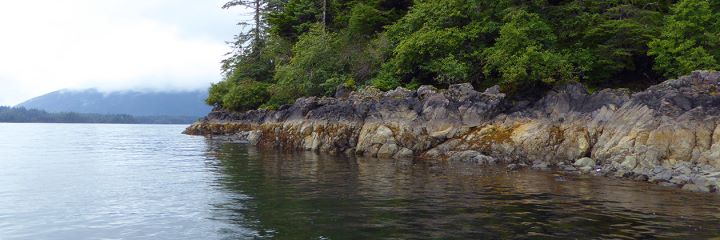Federal Reserved Water Rights

What are they?
Federal reserved water rights may be created when federal lands are withdrawn from the public domain (e.g. national parks, wildlife refuges, national forests).
Federal reserved water rights are different from state appropriated water rights. They:
- May apply to both instream and out-of-stream water uses
- May be created without actual diversion or beneficial use
- Are not lost by non-use
- Have priority dates established as the date the land was withdrawn
- Are for the minimum amount of water reasonably necessary to satisfy both existing and foreseeable future uses of water for the primary purposes for which the land is withdrawn.
Water rights for other federal purposes must be obtained under AS 46.15.
How are they adjudicated?
Federal reserved water rights are a judicial creation. The United State Supreme Court first recognized federal reserved water rights in Winters v. United States, 207 U.S. 564 (1908), an Indian reservation case. Since that time, court cases have extended the Winters Doctrine to other types of federal land withdrawals such as national parks, forests, and wildlife refuges.
Federal law, the McCarran Amendment (43 U.S.C. 666), allows judicial adjudication of federal reserved water rights in state court. However, the adjudication must include all water rights in a basin, including all claimed federal reserved water rights and all state administered water rights.
In 1986, the Alaska Legislature amended the Alaska Water Use Act to establish procedures for state court basin-wide adjudication of federal reserved water rights. The amendments also establish procedures for the Department of Natural Resources (DNR) to conduct administrative basin-wide adjudication, including federal reserved water rights, if the federal government consents to have its federal reserved water rights administratively adjudicated by DNR.
How much land in Alaska may have federal reserved water rights?
Of the 367.7 million acres in Alaska, almost 49 percent, or more than 178 million acres, are reserved federal lands, which may have federal reserved water rights. These federal lands are made up of:
- Military Land - 2.5 Million acres
- National Forests - 23.2 Million acres
- BLM Lands - 26.1 Million acres
- National Parks - 51 Million acres
- Fish & Wildlife Refuges - 76 Million acres
Why are they important to you?
Federal Reserved water rights may take priority over the water rights of individuals whose application dates are established later than the date of the federal withdrawal - even if the individuals are using the water at the time of withdrawal. If you use water in an area where there are or may be federal land withdrawals, it is especially important that you file for water rights to protect your water use. If a basin-wide adjudication is started for your area, you can then be assured of being included in the adjudication.
Why is DNR concerned with them?
Because most federal reserved water rights are not quantified, the Department of Natural Resources does not know how much water is needed or used for the primary purposes of federal land withdrawals in Alaska. Water resources cannot be efficiently managed or allocated if the Department of Natural Resources does not know how much unappropriated water is available from water sources.
For the Department of Natural Resources to efficiently manage and allocate the state's water and to adjudicate water rights, it is necessary to have federal reserved water rights in Alaska inventoried and quantified by the federal land management agencies in cooperation with the State of Alaska. The state can then integrate the federal reserved water rights with state administratively adjudicated water rights and manage water sources with greater certainty.
